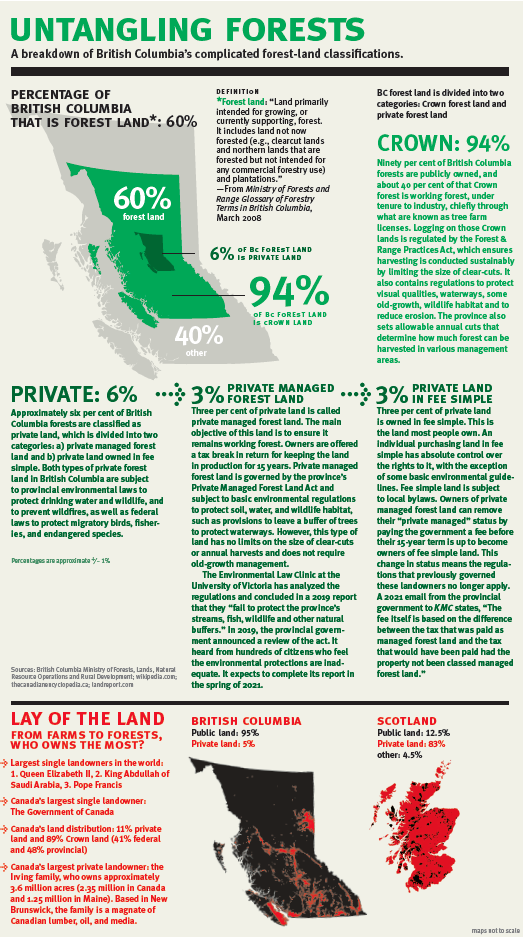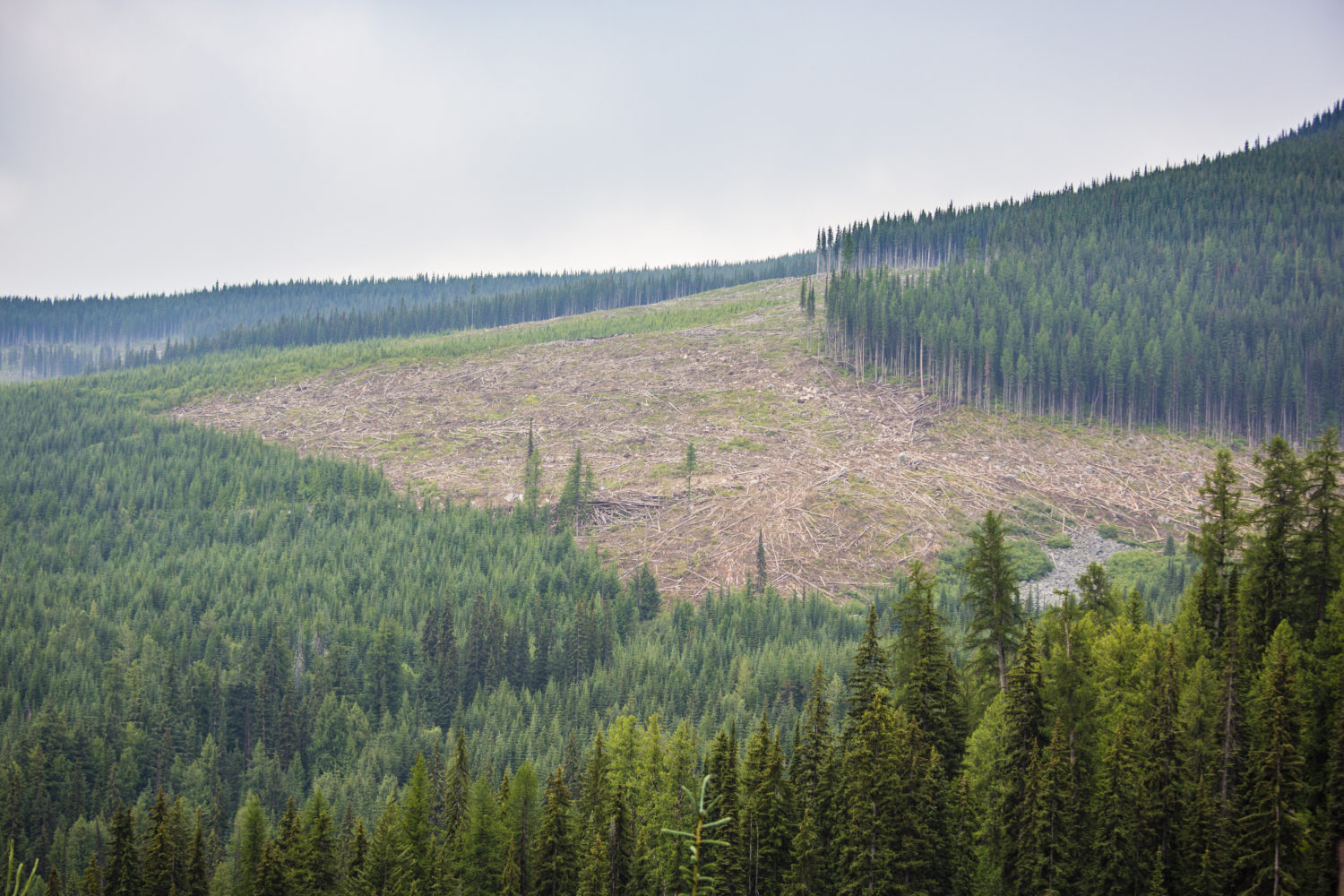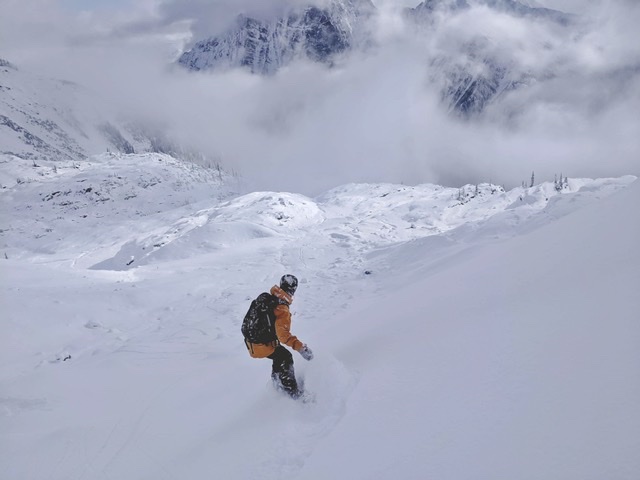REGULATION-FREE LOGGING ON PRIVATE LAND
Forests cover about 60% of British Columbian ground. Within this area, 94% of these forests is public crown land whilst the last 6% is privately owned (note that although the number seems small, 6% is about 3.2 million hectares!) Private land is also divided, as about half of it is Private Managed Forest Land and the other half is Private Land in Fee Simple. Although both sub-types have basic environmental guidelines governing their use, they do not have limits regarding the size of clear-cuts or annual harvest, and do not require old growth management. Private Managed Forest Land (let’s call it PMFL) has slightly higher enviro standards and a main objective for it is to remain as a working forest. But, as there’s almost always some loophole when it comes to environmental restrictions, by paying a fee to the government, owners of PMFL can change over their land titles to Fee Simple, and thus detour around a big dollop of provincial regulations.

So where am I going with this? Honestly, I’m just an average backcountry enthusiast on a mission to learn more about the forestry sector, as it is quickly becoming a source of more heated debates.
Much of our logging happens kilometres up dirt roads, and we only see the aftermath of the cutting from viewpoints, hiking trails, bike trailheads, etc. But, what happens when privately owned forests are manipulated very near to where we live, look, work and play? Does the public have a right to a voice? To express concern regarding impact of logging on private land? How much right should government have in regulating harvesting on that land, as there are currently no regulations that ensure private landowners replant what they harvest?

An interesting article recently posted by Mountain Culture Group dives deeper into the debate surrounding privately owned land use, while also exploring the politics behind a local battle to protect the forest around Nelson’s Cottonwood Lake. Give it a read!








